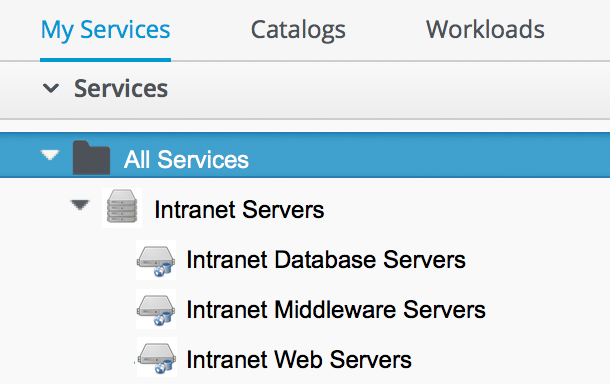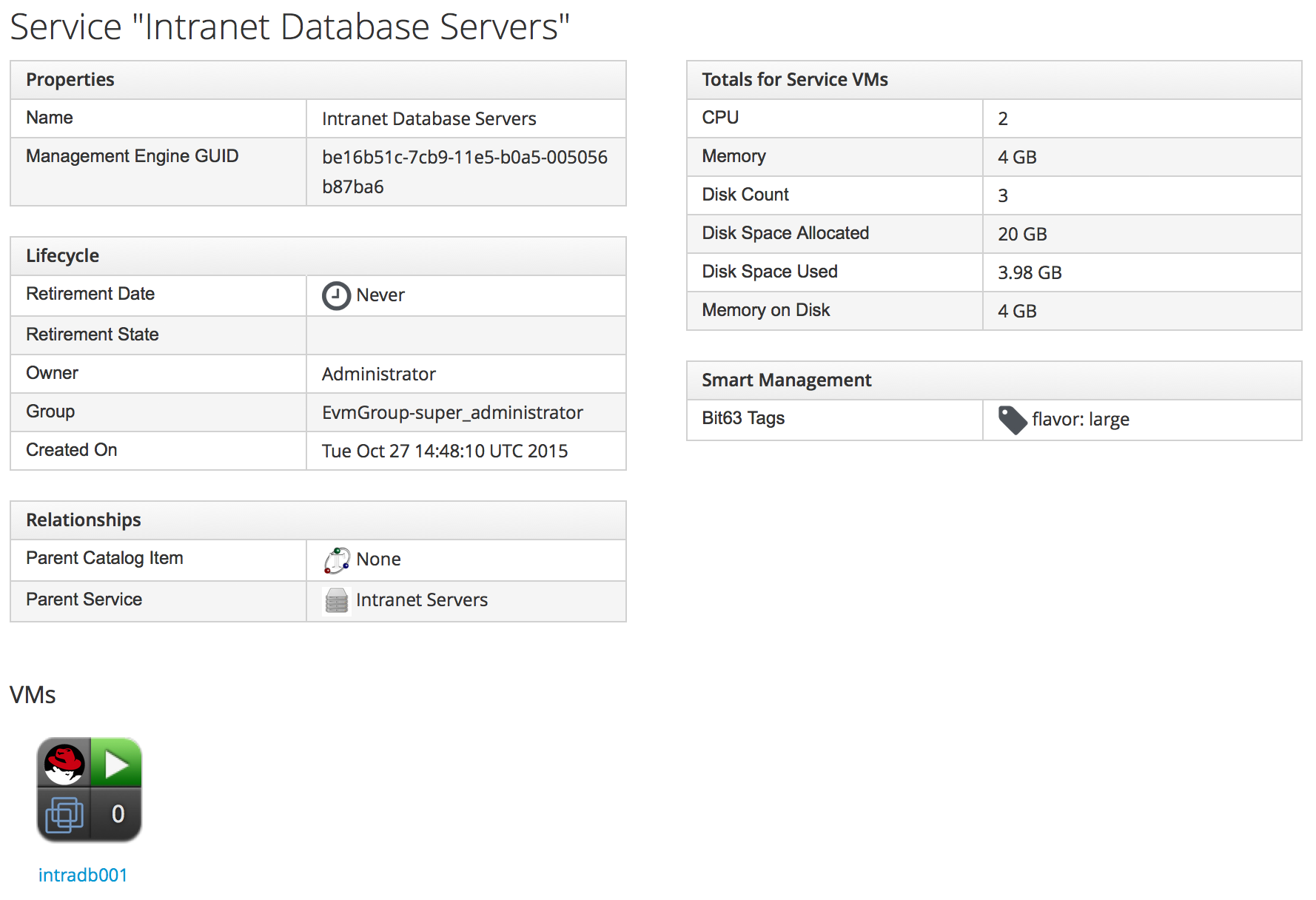Chapter 37. Service Hierarchies
We have seen how service catalogs made up of catalog items and bundles can simplify the process of ordering infrastructure or cloud instance and virtual machines. Simplicity of ordering is not the only benefit of services, however.
When we order one or more virtual machines from a service catalog, a new service is created for us that appears in All Services in the WebUI. This service gives us a useful summary of its resources in the Totals for Service VMs section. We can use this feature to extend the utility of services into tracking and organizing resources. We could, for example, use a service to represent a project comprising many dozens of virtual machines. We would be able to see the total virtual machine resource consumption for the entire project in a single place in the WebUI.
In line with this organizational use, we can arrange services in hierarchies for further convenience (see Figure 37-1).

Figure 37-1. A service hierarchy
In this example we have three child services, representing the three tiers of our simple intranet platform. Figure 37-2 shows the single server making up the database tier of our architecture.

Figure 37-2. The database tier
Figure 37-3 shows the two servers making up the middleware tier of our architecture.
Get Mastering CloudForms Automation now with the O’Reilly learning platform.
O’Reilly members experience books, live events, courses curated by job role, and more from O’Reilly and nearly 200 top publishers.

